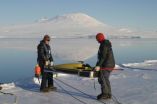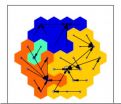(Press-News.org) The current Special Issue of Technology & Innovation, Proceedings of the National Academy of Inventors ™, (www.academyofinventors.org), now available on-line at: http://www.cognizantcommunication.com/filecabinet/Technology/techinnovation.html , is focused on the history, process and practice of scientific peer review, with several articles aimed at assessing scientific peer review within the federal government and peer review's relationship to federal policy formation.
According to A. Alan Moghissi, president of the nonproft Institute for Regulatory Science, and Michael S. Swetnam, of the Potomac Institute for Policy Studies, some confusion exists over what peer review is and how it should be used in policy decision making.
For Moghissi and Swetnam, advancements in science and technology drive an increase in the need for critical evaluation by the independent peers of those who create the advancements.
"Reviewers must be qualified and independent," they wrote. "Once more, review criteria must be identified, the process must be transparent, and over reliance on specific peer reviewers must be avoided. Too, institutional, intellectual and personal conflicts of interest must also be avoided."
Maintaining the integrity and improving peer review in the federal government was a key issue for Elmer Yglesias of the Science and Technology Policy Institute, Institute for Defense Analyses, who wrote that "there are indications that the (federal peer review) system may be over stretched and prone to error."
"Unprecedented high numbers of proposals and low funding rates may lead one to wonder whether the (federal) peer review system is up to the challenge," said Yglesias. "Indications are that it is over stretched."
According to Yglesias, NSF surveys indicate that reviewer's workload has increased and the number of reviewers per proposal has been declining, making funding decisions susceptible to error. The best solution to ensure review's integrity, he wrote, may lie in an Internet-based calibration system.
Nowhere may the process of peer review be more important than in determining what should be funded in military medical research. Dr. John F. Glenn, principal assistant for research and technology for the U.S. Army Medical Research and Materiel Command, made the point that candidate products may include prototypes for vaccines, drugs, diagnostics and other medical devices, information products, such as for training and behavioral interventions, as well as human performance information and information on a wide range of hazards.
"A distinctive feature of the core research programs is that they are end product-focused," wrote Glenn. "This leads to three separate roles for peer review – evaluation of research project quality, evaluation of research program quality, and independent validation of research products."
Important to Glenn is determining that a peer review process can validate that end products have met their objectives. He noted that the U.S. Food and Drug Administration's review process employs both internal and external scientific review panels and that the FDA's process is accepted as a substitute by the Department of Defense.
"Unfortunately, there is no comparable, consistently employed peer review process for the validation of medication information or clinical practice guidelines," wrote Glenn. "Such processes are needed as they are intrinsic for evidence-based medicine."
Not only does good peer review help validate a projects science, wrote lead author E. Melissa Kaine, MD, Captain, Medical Corps, U.S. Navy, it can also foster innovation.
According to Dr. Kaine, the Congressionally Directed Medical Research Program (CDMRP) is comprised of 18 individual programs seeking to eradicate diseases and support the 'warfighter.' The CDMRP emphasizes innovative, high-risk, high-gain research and employs a two-tier process to evaluate scientific merit, innovation and impact, followed by an external review. These processes, she said, support the mission to fund innovative research. While 'innovative' may be difficult to define, research that is transformative, paradigm shifting and that which represents more than an incremental advance in existing knowledge, serves as definitive.
One innovative aspect of the CDMRP review process is the use of layperson reviewers in addition to scientific experts.
"Consumer reviewers are included and involved at every stage of the funding cycle," she noted. "These reviewers are focused on the impact of the proposed project and provide valuable insight into a projects potential to result in positive outcomes."
Finally, the National Science Foundation (NSF) historian, Marc Rothenberg, reported on the history of peer review at the 60-year-old agency.
"NSF has had to consider 'broader impact' in addition to 'good science' in its mission to support basic research in the wide spectrum of science and engineering disciplines," wrote Rothenberg. "NSF has also fought a continuing battle to clarify peer review criteria and to persuade peer communities to use the criteria as set down."
Rothenberg added that the trend at NSF since the 1960s has been to reduce the number of criteria, but to broaden the definition of those remaining.
INFORMATION:
The National Academy of Inventors ™ recognizes and encourages inventors who have a patent issued from the U.S. Patent and Trademark Office, enhances the visibility of university technology and academic innovation, encourages the disclosure of intellectual property, educates and mentors innovative students, and encourages the translation of the inventions of its members to benefit society.
The editorial offices of Technology & Innovation are located at the University of South Florida, Office of Research and Innovation, 3702 Spectrum Blvd., Suite 175, Tampa, Florida, 33612. Tel: (813) 974-3181. Email jlowry@research.usf.edu
News Release by Randolph Fillmore, Florida Science Communications, www.sciencescribe.net
END
Conservation paleobiologists—scientists who use the fossil record to understand the evolutionary and ecological responses of present-day species to changes in their environment – are putting the dead to work.
A new review of the research in this emerging field provides examples of how the fossil record can help assess environmental impact, predict which species will be most vulnerable to environmental changes and provide guidelines for restoration.
The literature review by conservation paleobiologists Gregory P. Dietl of the Paleontological Research Institution ...
It is possible to construct a three-dimensional, 3D, face from flat 2D images, according to research published in the International Journal of Biometrics this month. The discovery could be used for biometrics in security applications or in forensic investigations.
Xin Guan and Hanqi Zhuang of Florida Atlantic University on Boca Raton explain how Biometrics, the technology of performing personal identification or authentication via an individual's physical attributes, is becoming an increasingly viable solution for identity management, information protection and homeland ...
LA JOLLA, CA – A team of scientists at The Scripps Research Institute and the University of Virginia has determined the structure of the protein package that delivers the genetic material of the human immunodeficiency virus (HIV) to human cells.
The work is the culmination of studies carried out over the last decade looking at different portions of the cone-shaped container, or the capsid. The final piece of the puzzle, described in an article published in Nature on January 20, 2011, details the structure of the two ends of the cone.
"This paper is a real milestone ...
PORTLAND, Ore. – According to research conducted at the Oregon National Primate Research Center at Oregon Health & Science University, the commonly held belief that oral contraceptives cause weight gain appears to be false. The results of the study are published online and will appear in next month's edition of the journal Human Reproduction.
"A simple Google search will reveal that contraceptives and the possibility that they may cause weight gain is a very highly debated topic," said Alison Edelman, M.D., a physician and researcher in the Department of Obstetrics ...
With mortgage loan defaults on the rise yet again, two mortgage researchers are proposing a new type of mortgage contract that automatically resets the balance and the monthly payment based on the mortgaged home's market value.
Brent Ambrose, Smeal Professor of Real Estate and director of the Institute for Real Estate Studies at the Penn State Smeal College of Business, and Richard Buttimer, a professor in the Belk College of Business at the University of North Carolina at Charlotte, call their new mortgage contract the "adjustable balance mortgage" and contend that it ...
Researcher Walker Smith of the Virginia Institute of Marine Science, College of William and Mary, has been conducting shipboard studies of biological productivity in Antarctica's Ross Sea for the last three decades. This year he's letting underwater robots do some of the work.
Smith and graduate student Xiao Liu are using a two-year grant from the National Science Foundation to deploy and test a free-swimming underwater glider in the frigid waters of the Ross Sea near the U.S. McMurdo Research Station. The grant also funds efforts by fellow VIMS professor Marjorie Friedrichs ...
Grand Rapids, Mich. (January 19, 2011) – In a collaborative project involving scientists from three continents, researchers have identified a gene that is mutated in one in three patients with the most common form of renal cancer. The gene – called PBRM1 – was found to be mutated in 88 cases out of 257 clear cell renal cell carcinomas (ccRCC) analysed, making it the most prevalent to be identified in renal cancer in 20 years.
The identification of a frequently mutated gene provides new insights into the biology of the disease, which will be critical in the continued effort ...
The instability of large, complex societies is a predictable phenomenon, according to a new mathematical model that explores the emergence of early human societies via warfare. Capturing hundreds of years of human history, the model reveals the dynamical nature of societies, which can be difficult to uncover in archaeological data.
The research, led Sergey Gavrilets, associate director for scientific activities at the National Institute for Mathematical and Biological Synthesis and a professor at the University of Tennessee-Knoxville, is published in the first issue of ...
Chapel Hill, NC – The National Cancer Institute estimates that more than 43,000 Americans were diagnosed with pancreatic cancer last year and more than 36,000 died from the disease. Despite advances in genetic science showing that the Ras oncogene is mutated in virtually all pancreatic cancers, scientists have been frustrated by the complexity of the signaling pathways in humans, which make it difficult to pinpoint potential therapeutic targets.
In a study published today in the Cell Press journal Developmental Cell, a team of researchers led by Channing Der, PhD, Distinguished ...
LIVERMORE, Calif. – Using seawater and calcium to remove carbon dioxide (CO2) in a natural gas power plant's flue stream, and then pumping the resulting calcium bicarbonate in the sea, could be beneficial to the oceans' marine life.
Greg Rau, senior scientist with the Institute of Marine Sciences at UC Santa Cruz and who also works in the Carbon Management Program at Lawrence Livermore National Laboratory, conducted a series of lab-scale experiments to find out if a seawater/mineral carbonate (limestone) gas scrubber would remove enough CO2 to be effective, and whether ...


